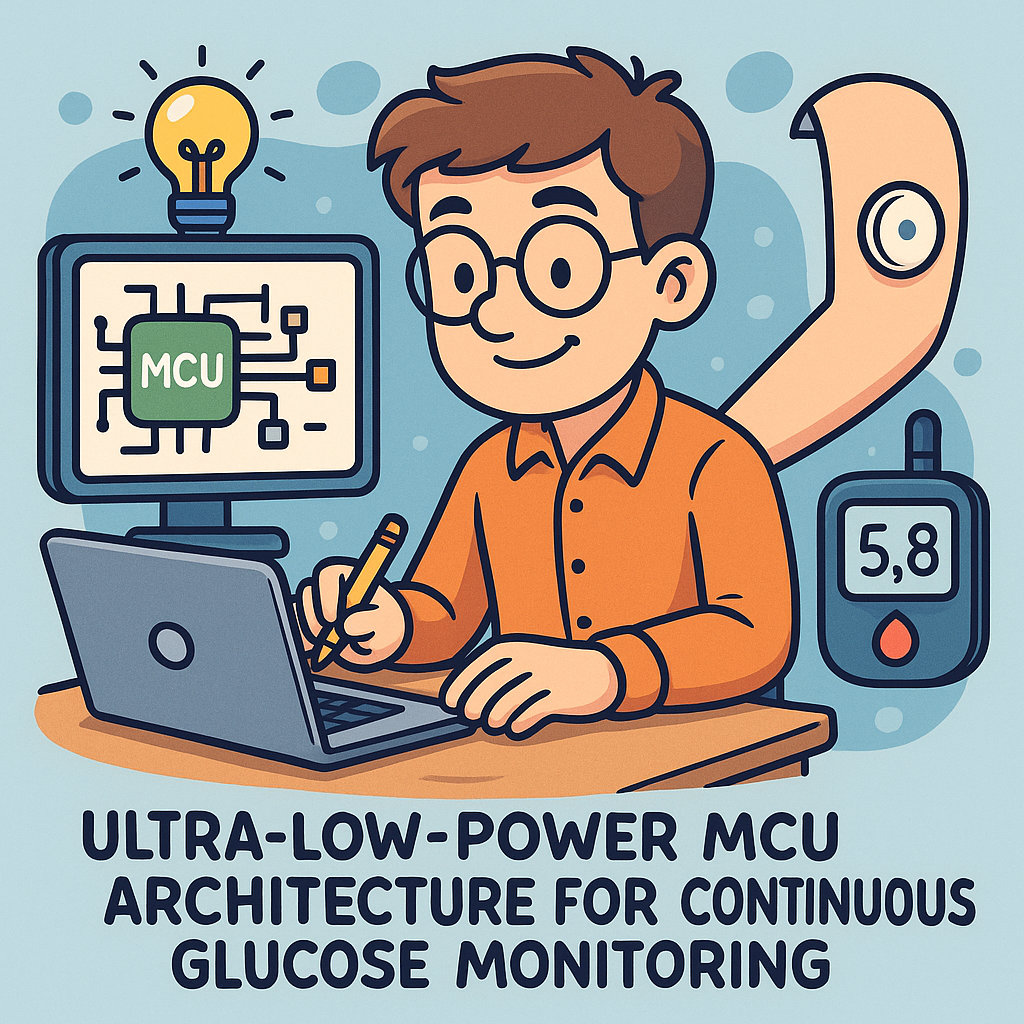Understanding the Need for Ultra-Low-Power MCUs in Continuous Glucose Monitoring
Continuous glucose monitoring (CGM) systems are transformative for diabetic patients, providing real-time glucose levels and trends. However, the challenge lies in designing a microcontroller unit (MCU) that is not only functional but also ultra-low-power. In a world where patients need constant monitoring, the device must operate for extended periods without frequent recharging or battery replacement. This need drives the engineering decisions behind the MCU architecture.
Core Challenges in Power Consumption
One of the primary challenges in designing an ultra-low-power MCU for CGM is the balance between performance and power efficiency. Standard microcontrollers often consume significant power during active states, which is detrimental for wearable devices expected to operate continuously for days or weeks. To mitigate this, engineers must consider several factors:
- Sleep Modes: Implementing various low-power sleep modes is crucial. The MCU should transition to these modes when not actively measuring glucose levels, waking only for necessary tasks.
- Dynamic Voltage and Frequency Scaling (DVFS): By adapting the operating voltage and frequency based on the task requirements, the MCU can significantly reduce power consumption during lower-intensity processes.
- Peripheral Management: Optimizing the power consumption of peripherals such as sensors and communication modules is vital. Using low-power ADCs and optimizing the sampling rates can contribute to overall energy savings.
Hardware Design Considerations
The hardware architecture of an ultra-low-power MCU for CGM must integrate energy-efficient components. One approach is to select a 32-bit ARM Cortex-M series MCU, known for its low power consumption and high efficiency. These MCUs often have built-in features that make them suitable for medical applications:
- Integrated Analog Front-End: Including an integrated analog front-end can reduce the need for external components, which often consume additional power.
- Low-Power Radio Communication: Utilizing protocols like Bluetooth Low Energy (BLE) for data transmission allows for efficient communication while maintaining low power requirements.
- On-Chip Memory: Leveraging SRAM over external memory can minimize power drain associated with data retrieval processes.
Firmware Development and Algorithm Optimization
The firmware that drives the MCU plays a crucial role in its energy efficiency. It’s not just about the hardware; the software must be meticulously optimized to ensure the MCU operates under the lowest power conditions possible. Engineers often employ several strategies:
- Interrupt-Driven Programming: Instead of polling sensors continuously, using interrupts can significantly reduce CPU wake time. The MCU can remain in a low-power state until an event triggers the next measurement.
- Data Filtering Algorithms: Implementing efficient algorithms for data filtering can reduce the frequency of glucose level measurements while still providing accurate trend analysis, thus saving power.
- Adaptive Sampling Rates: By adjusting the sampling rates based on the user’s activity level or glucose trends, the firmware can conserve power during stable periods.
Real-World Design Tradeoffs
In real-world applications, design tradeoffs are inevitable. For instance, while increasing sampling rates can yield more accurate data, it directly correlates with increased power consumption. Engineers must carefully analyze the target patient population, their activity levels, and the clinical requirements of CGM devices to find an appropriate balance.
Another tradeoff involves the choice of battery. Lithium polymer batteries offer high energy density but may require more complex charging circuits. On the other hand, coin cell batteries are easier to integrate but often have limited capacity, necessitating a design that prioritizes ultra-low power consumption.
Why Design Decisions Matter
The decisions made during the design phase can significantly impact the user experience. A device that requires frequent charging or replacement negatively affects patient compliance. Therefore, every element of the design, from component selection to firmware optimization, must be meticulously crafted to ensure the device not only functions well but also integrates seamlessly into the patient’s lifestyle.
Ultimately, designing an ultra-low-power MCU architecture for continuous glucose monitoring presents a unique blend of challenges and opportunities for innovation. Each engineering choice, from the hardware selected to the algorithms implemented, plays a critical role in delivering a reliable and efficient solution for diabetic patients, ultimately enhancing their quality of life.



